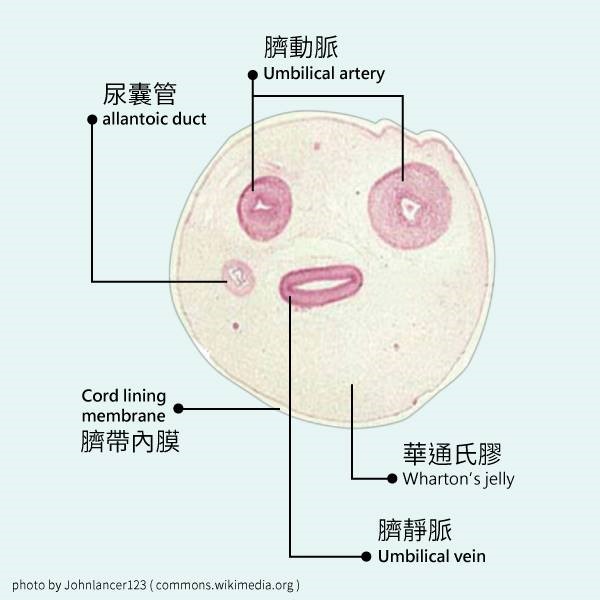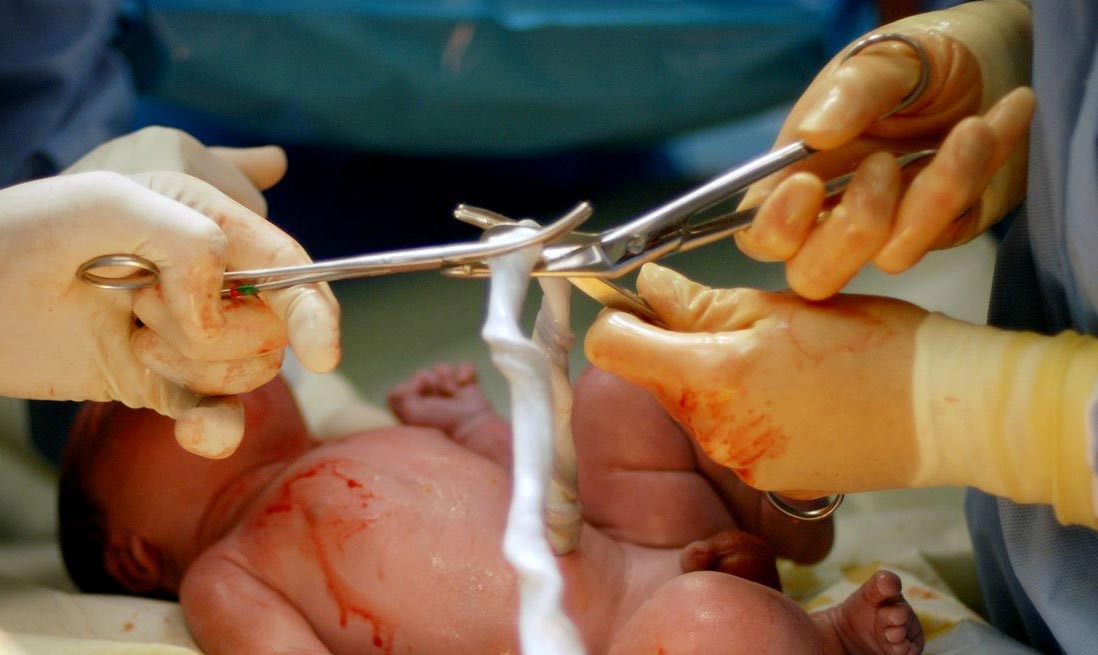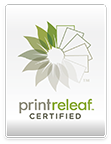


華通氏膠質(Wharton’s Jelly)
臍帶是幾乎所有哺乳動物(包括人類)的母體內, 胎兒與懷孕的母親的胎盤的一種聯繫結構。
臍帶狀如繩索,表面光滑透明,內含結締組織和血管;在胎盤內胎兒的血液循環與母親的血液循環交換營養物質和氧氣,通過臍帶營養物質與氧氣來到正在成長的胎兒的體內。
一般人的臍帶含有三條血管:兩條臍動脈和一條臍靜脈。
兩條動脈將二氧化碳和營養少的血輸入胎盤,靜脈將氧氣和營養豐富的血液輸回胎兒。另一條動脈在胎兒的第一周就退化了。動脈輸送靜脈血(富含二氧化碳和廢物的血)、靜脈輸送動脈血(富含氧氣和營養的血)的血管除肺動脈/靜脈外就只有臍動脈/靜脈。人的臍帶約50至60厘米長,直徑約2厘米,臍帶內的血管由華通氏膠質(Wharton’s Jelly)包裹,華通氏膠質中含有豐富的幹細胞。
通過胎盤絨毛上皮的滲透作用,胎兒血液於絨毛間隙內,與母體血液之間進行物質的交換 。
胎兒逸出後臍帶失去作用,數分鐘內搏動停止,此時應在臍帶根部將其剪斷並結紮,動物一般是母動物將臍帶咬斷。之後剩餘的臍帶殘段在一到兩周內脫落,留下的疤痕就是肚臍。
嬰兒出生後遺留在胎盤和臍帶中是幹細胞的重要來源,其中研究與臨床上多採用來源自臍帶之華通氏膠質為間質幹細胞重要來源。
華通氏膠質間質幹細胞(Wharton’s jelly MSC, WJMSC),更具有較易於分離與培養及體外增生速度較快的特性。在體外試驗也可以成功的誘導分化成脂肪細胞、軟骨細胞、硬骨細胞等。
WJMSC經 由 表 面 抗 原 分 析其具有CD45(-)、CD 34(-)、HLA class II (-) 、 C D 7 3 ( + ) 、CD90(+) 、 CD105(+) 及 HLA ABC(+)之表現的間質幹細胞的特性,並可在體外試驗成功的誘導分化成脂肪細胞、軟骨細胞及硬骨細胞。
間質幹細胞(MSCs)多重分化潛能,不但改變了人們原先對於成體幹細胞分化能力受限的看法,也大幅提升了 MSCs在細胞療法(cell therapy)、組織工程 (tissue engineering)、及再生醫學(regenerative medicine)等領域的研究與應用的價值。
臍帶間質幹細胞(mesenchymal stem cells, MSCs)
間質幹細胞是一類起源於早期中胚層,並且能夠自我更新和具有多向分化潛能的成體幹細胞。大量的研究證明,MSCs 在再生醫學領域中具有巨大潛力,未來可被用於治療多種類型疾病,如脊髓損傷、肝損傷、腎損傷及自身免疫性疾病等。 MSCs 一般來源於胎盤、脂肪、牙髓、骨髓以及臍帶和胎兒內臟等器官組織。其中,臍帶作為在母體和胎兒之間運輸營養物質的紐帶,同樣含有大量的間質幹細胞。並且相較於易受供體的年齡因素影響的骨髓間質幹細胞和易受到醫學倫理限制的胚胎來源的間質幹細胞而言,增殖效率高、供體廣泛、病毒感染率低的臍帶間質幹細胞(human umbilical cord mesenchymal stem cells,hUCMSCs)可能是臨床應用時的更好的選擇,這些優勢也使得 hUCMSCs 在再生醫學領域備受關注。
想了解更多? 請留下資料讓我們將小冊子電郵給你。
免費索取小冊子
參考資料:
- Arno, A., Amini-Nik, S., Blit, P., Al-Shehab, M., Belo, C., & Herer, E. et al. (2014). Human Wharton’s jelly mesenchymal stem cells promote skin wound healing through paracrine signaling. Stem Cell Research & Therapy, 5(1), 28.
- Cheng, T., Yang, B., Li, D., Ma, S., Tian, Y., & Qu, R. et al. (2015). Wharton’s Jelly Transplantation Improves Neurologic Function in a Rat Model of Traumatic Brain Injury. Cellular And Molecular Neurobiology, 35(5), 641-649.
- Dasari, V. (2014). Mesenchymal stem cells in the treatment of spinal cord injuries: A review. World Journal Of Stem Cells, 6(2), 120.
- Dazzi, F., & Horwood, N. (2015). Potential of mesenchymal stem cell therapy. – PubMed – NCBI. Ncbi.nlm.nih.gov.
- Kim, N., & Cho, S. (2013). Clinical applications of mesenchymal stem cells. Korean J Intern Med, 28(4), 387.
- Mitchell, K., Weiss, M., Mitchell, B., Martin, P., Davis, D., & Morales, L. et al. (2003). Matrix Cells from Wharton’s Jelly Form Neurons and Glia. STEM CELLS, 21(1), 50-60.PrNewswire,. (2015). Beike Biotechnology Publishes New Research Finding Adult Mesenchymal Stem Cells Safe and Effective in Acute Myocardial Infarction. Prnewswire.com.
- Ramsden, C., Powner, M., Carr, A., Smart, M., da Cruz, L., & Coffey, P. (2013). Stem cells in retinal regeneration: past, present and future. Development, 140(12), 2576-2585.
- Stemcelldigest.com,. (2013). Scientists grow artificial skin using stem cells from the umbilical cord | Stem Cell News Digest. Stemcellnewsdigest.com.
- Tanna, T., & Sachan, V. (2015). Mesenchymal stem cells: potential in treatment of neurodegenerative diseases. – PubMed – NCBI. Ncbi.nlm.nih.gov.
- Volarevic, V., Nurkovic, J., Arsenijevic, N., & Stojkovic, M. (2014). Concise Review: Therapeutic Potential of Mesenchymal Stem Cells for the Treatment of Acute Liver Failure and Cirrhosis. STEM CELLS, 32(11), 2818-2823.
- Verter, D. (2015). Parent’s Guide to Cord Blood. Parentsguidecordblood.org. Retrieved 26 October 2015, f
- Watson, N., Divers, R., Kedar, R., Mehindru, A., Mehindru, A., Borlongan, M., & Borlongan, C. (2015). Discarded Wharton jelly of the human umbilical cord: a viable source for mesenchymal stromal cells. Cytotherapy, 17(1), 18-24.



